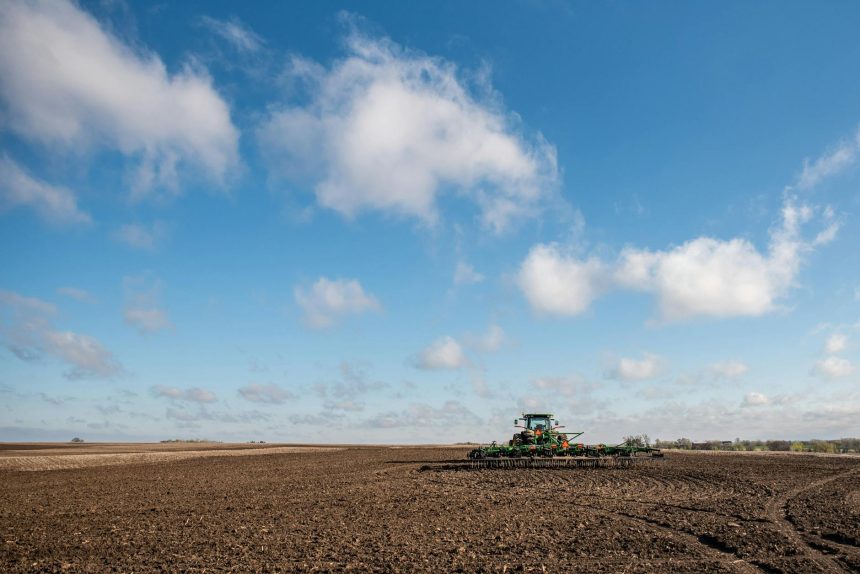Crop Insurance: 5 Ways to Safeguard Your Farm’s Future in 2025
Farming is an inherently unpredictable endeavor, constantly at the mercy of weather, markets, and unforeseen events. For generations, growers have sought ways to mitigate these risks, and today, **crop insurance** stands as one of the most vital tools in their arsenal. It’s more than just a policy; it’s a financial lifeline designed to protect your hard work and investment against the capricious nature of agriculture.
This comprehensive guide will delve into the intricacies of modern agricultural protection, helping you understand its critical role and how to make informed decisions for your operation’s long-term prosperity. Let’s explore how you can build a resilient future for your farm.
Understanding Crop Insurance: Your Farm’s Financial Shield
At its core, **crop insurance** provides financial protection to agricultural producers against losses due to natural perils or declines in market prices. It’s a specialized form of risk management tailored to the unique challenges faced by farmers.
Without adequate coverage, a single devastating weather event or a sudden market downturn could jeopardize an entire season’s efforts, leading to significant financial hardship. This makes understanding and utilizing these policies absolutely essential for modern farming.
What is Agricultural Risk Management?
Agricultural risk management encompasses a range of strategies farmers use to cope with uncertainty. These include production practices, marketing strategies, financial management, and, crucially, insurance. Effective risk management aims to reduce the variability of farm income and improve long-term financial stability.
It’s about proactive planning to minimize the impact of adverse events, ensuring your farm can weather any storm, literal or metaphorical.
Why is Crop Protection Essential for Farmers?
The importance of robust crop protection cannot be overstated. It acts as a safety net, allowing farmers to recover from losses that would otherwise be catastrophic. This security enables them to reinvest in their operations, adopt new technologies, and plan for future seasons with greater confidence.
Moreover, having a solid policy often strengthens a farm’s financial standing, making it easier to secure loans and other financing vital for growth and sustainability.
Types of Crop Insurance Policies Available
The landscape of agricultural policies is diverse, offering various options to suit different farm types, crops, and risk profiles. Understanding the primary categories is the first step toward selecting the right coverage.
These policies are often subsidized by the federal government, making them more accessible and affordable for producers.
Revenue Protection (RP) vs. Yield Protection (YP)
These are two of the most common types of policies:
- Revenue Protection (RP): This policy protects against a loss of revenue caused by low yields, low prices, or a combination of both. It guarantees a certain amount of revenue per acre, ensuring farmers are compensated if actual revenue falls below this guarantee.
- Yield Protection (YP): YP policies protect against production losses due to natural perils. If the actual yield falls below the guaranteed yield (based on the farm’s historical average), the farmer receives an indemnity payment.
Exploring Whole-Farm Revenue Protection (WFRP)
For farms with diverse operations, Whole-Farm Revenue Protection (WFRP) offers a unique solution. WFRP provides a revenue guarantee for the entire farm, rather than individual crops.
This policy is particularly beneficial for farms growing multiple crops, those with specialty crops, or farms that use diversified production systems, simplifying coverage and offering broad protection.
Specialty Crop Coverage Options
Beyond traditional commodities, specific policies cater to specialty crops like fruits, vegetables, and nuts. These often have unique risk factors and require tailored coverage. Growers should explore options designed to address the specific vulnerabilities of their high-value crops.
The availability of such policies ensures that even niche agricultural sectors can access vital financial protection.
Key Benefits of Securing Farm Insurance
Investing in appropriate farm insurance yields a multitude of benefits that extend far beyond simple financial payouts. It’s a strategic decision that underpins the stability and growth of any agricultural enterprise.
Let’s examine some of the most compelling advantages for growers.
Mitigating Weather-Related Losses
Weather is arguably the biggest variable in farming. Droughts, floods, hail, frost, and excessive heat can decimate crops in an instant. Robust policies provide crucial compensation when these natural perils strike, helping farmers recover and replant.
This mitigation is essential for maintaining operational continuity and preventing total financial ruin.
Ensuring Income Stability for Growers
Fluctuations in market prices can be as damaging as adverse weather. Policies offering revenue protection help stabilize farm income by guaranteeing a minimum revenue level. This stability is critical for budgeting, debt repayment, and future planning.
Predictable income streams allow farmers to make more confident long-term investments in their operations.
Accessing Agricultural Subsidies and Programs
Often, participation in federal programs or certain agricultural subsidies is contingent upon having a minimum level of coverage. Securing a policy can unlock access to these beneficial programs, further enhancing a farm’s financial health and resilience.
It acts as a gateway to broader support systems designed to bolster the agricultural sector.
Choosing the Right Policy: A Step-by-Step Guide
Navigating the various options can seem daunting, but a systematic approach will help you select the most suitable policy for your unique situation. This process involves careful assessment and expert consultation.
Making an informed choice is paramount to maximizing the benefits of your investment.
1. Assessing Your Farm’s Specific Needs
Begin by evaluating your farm’s unique characteristics: the crops you grow, your historical yields, typical weather patterns, and your financial risk tolerance. Consider what types of losses would most severely impact your operation.
2. Understanding Deductibles and Coverage Levels
Familiarize yourself with the policy’s deductible (the amount you pay before coverage kicks in) and the various coverage levels available. Higher coverage levels offer more protection but come with higher premiums. Find a balance that aligns with your budget and risk appetite.
3. Working with an Approved Insurance Provider
It is crucial to work with a reputable and approved insurance agent who specializes in agricultural policies. They can provide personalized advice, explain complex terms, and help you navigate the application process. Look for agents with strong local knowledge and a track record of excellent service.
For more detailed information on federal programs and approved providers, visit the USDA Risk Management Agency (RMA) website.
Future Trends and Innovations in Agricultural Insurance
The agricultural sector is constantly evolving, and so too is the world of farm protection. Innovations are continually emerging to offer more precise and comprehensive coverage, adapting to new challenges like climate change.
Staying informed about these advancements can help you leverage the latest tools for your farm’s security.
Technology’s Role: Drones and Data Analytics
Emerging technologies, such as drone imagery and advanced data analytics, are revolutionizing how risks are assessed and claims are managed. These tools provide more accurate and timely information on crop health and damage, leading to more efficient and equitable policy administration.
Precision agriculture is increasingly intertwined with precision insurance.
Climate Change Adaptation and New Coverages
With climate change introducing more extreme and unpredictable weather patterns, the industry is developing new types of coverage to address these evolving risks. Expect to see more parametric policies (triggered by specific weather events) and tailored solutions for climate-resilient farming practices.
The focus will be on proactive adaptation and robust protection against novel threats.
For further insights into the legal and policy aspects of agriculture, explore resources from the National Agricultural Law Center.
Conclusion: Protecting Your Investment with Smart Crop Insurance Choices
In the dynamic world of agriculture, **crop insurance** is not merely an expense; it’s a strategic investment in your farm’s resilience and future. By understanding the types of policies available, recognizing their benefits, and making informed choices, you can effectively safeguard your operation against the myriad of risks inherent in farming.
The right coverage provides peace of mind, allowing you to focus on what you do best: feeding the world. Ready to secure your farm’s future? Consult with a certified agricultural insurance agent today to explore the best crop insurance options for your operation.
**
Featured image provided by Pexels — photo by Rachel Meiergerd









